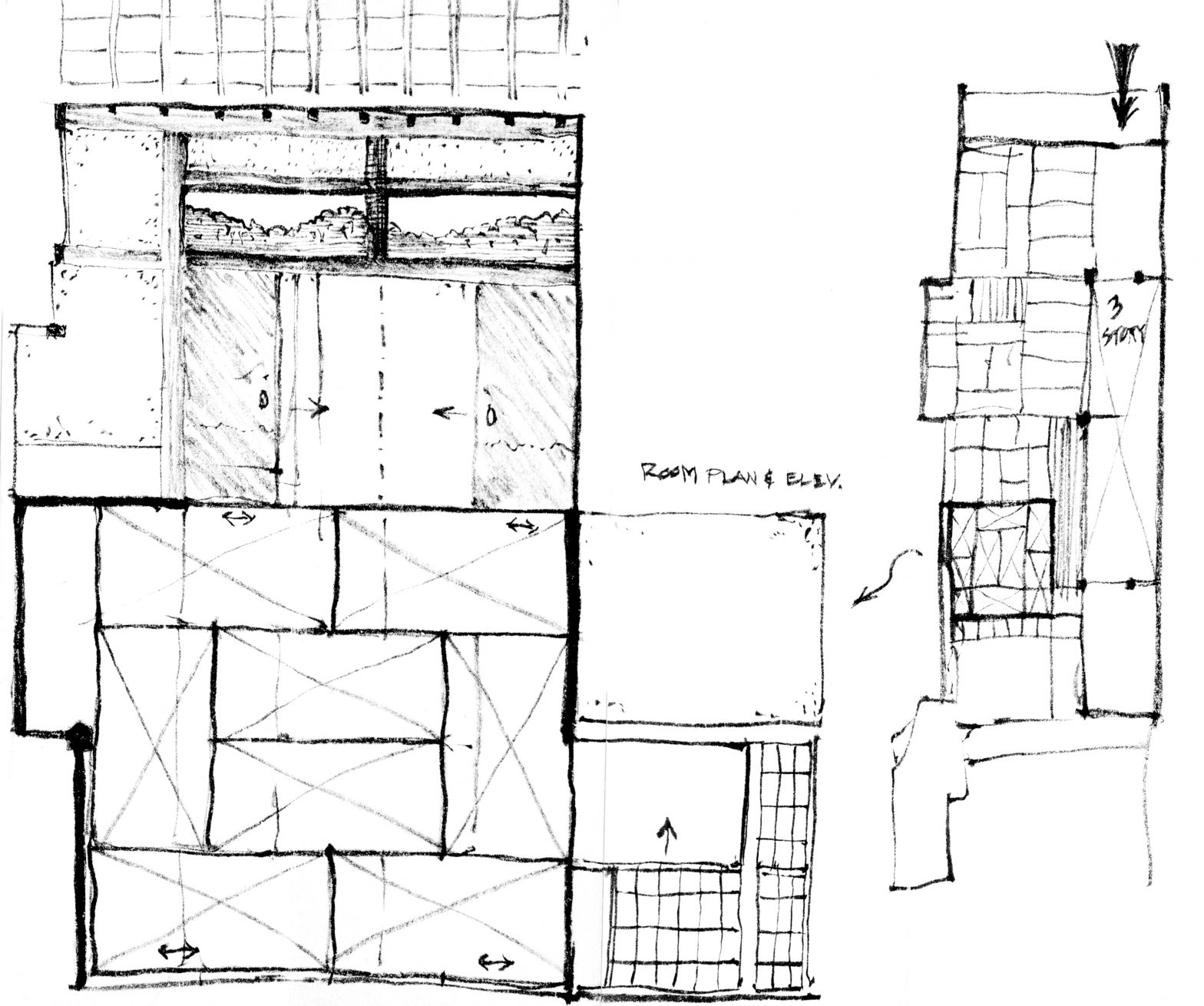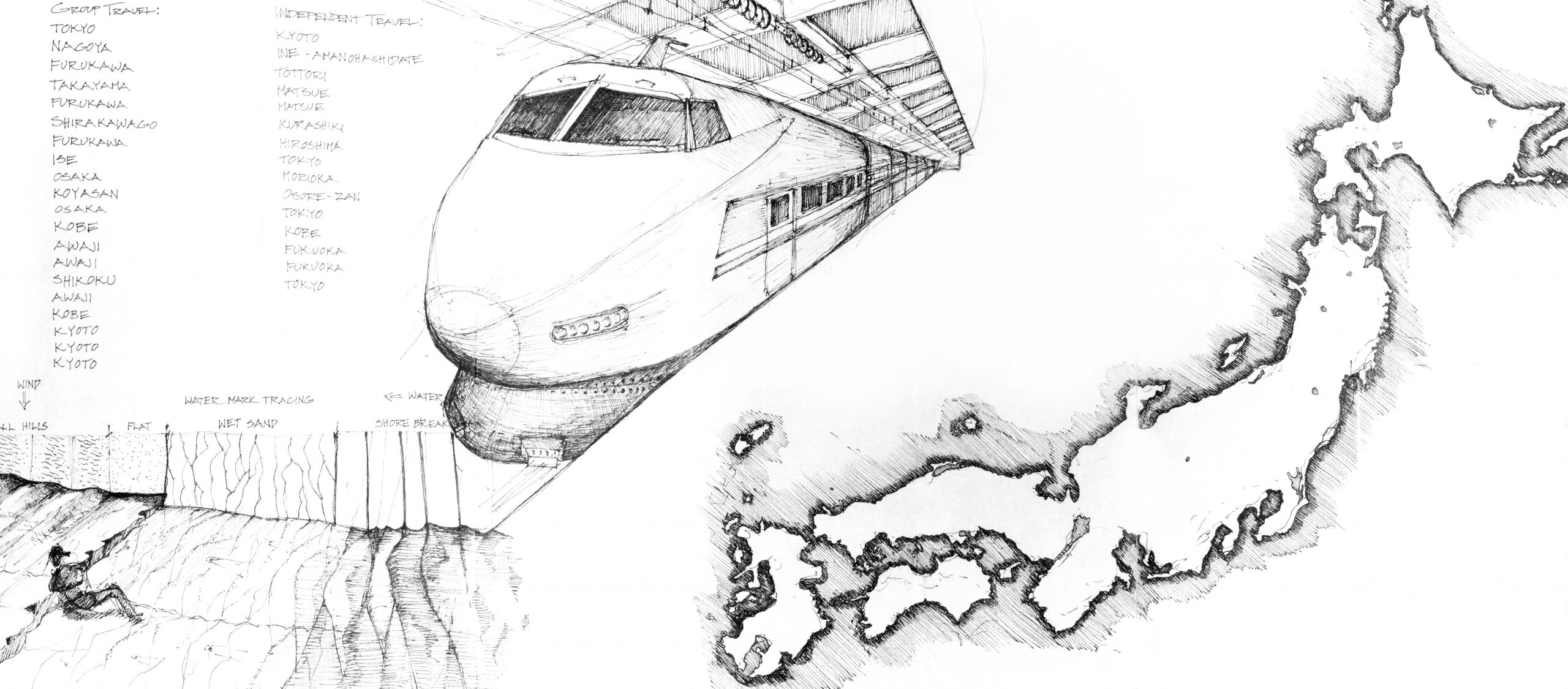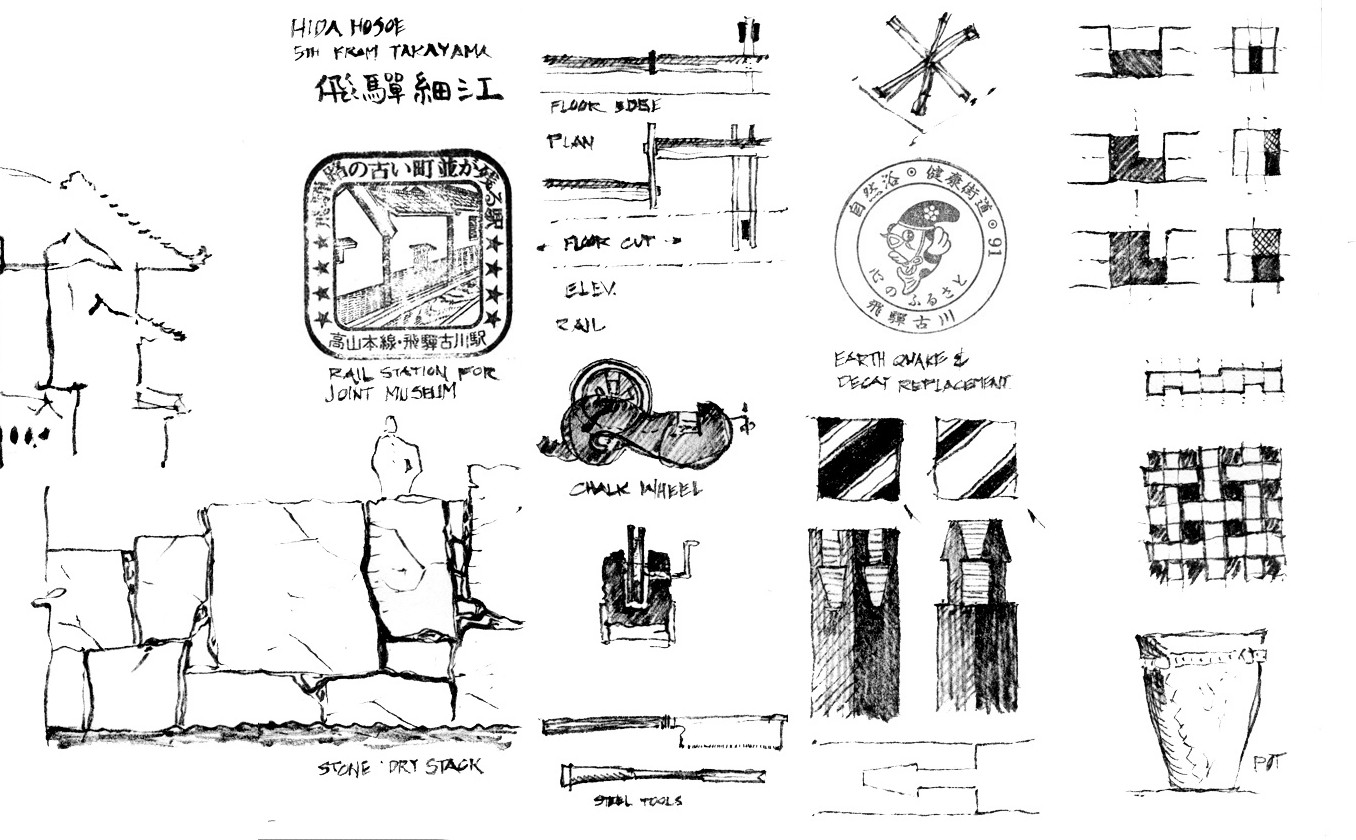5.10-japan-2-detail-c tatami mats Highlights Relevant to Sustainable Design:
Modular flooring streamlines design and maintenance.
We sometimes take for granted systems in commercial flooring like carpet tiles or the modular ceiling grids overhead in facilities, from offices and schools to hospitals and retail stores. The ubiquitous commercial ceiling grid that holds fluorescent tube fixtures is typically 24” x 48” with a length that is exactly twice its width. The modular tatami mats that have been used in traditional Japanese structures for hundreds of years are a distant ancestor with the same geometric proportion that is also twice as long as its width.
Tatami mats are 35 1/2” x 71” or about three feet wide by six feet long. The surface is typically made from rush grass with cotton borders, a rice straw core, and protective backing. The long rush grass is dyed with natural clay to produce a golden yellow color, and it is tightly woven and stitched in precise tension to prevent warping. The core made of rice straw is naturally treated, kiln dried, and set in layers that are compressed to two inches before yarn is used to stitch them together for a durable and level flooring system. With care, the tatami floors will last up to twenty years. The modularity is key in that if a mat is damaged, the whole floor does not need to be replaced. Unlike roll-out carpet and matting, the tatami mat can be repaired or replaced. In America, between 25 and 40 percent of our solid waste stream is building-related debris[i] of which some portion every day is discarded carpets. On the longevity front, carpets are often priced according to five, ten, fifteen, and twenty-year lives, and the longevity of the tatami mats puts them at the upper tier.
Author and illustrator: Charlie Szoradi is an architect, inventor, and the CEO of Independence LED Lighting. He writes about many other topics related to Japanese architecture and tatami mats through his extensive travels around the world.
If you have found this posting online, it is an excerpt from Mr. Szoradi’s book Learn from Looking that served as the inspiring seed content for this drawing share resource. For additional drawings and insights on modular systems, we hope that you enjoy exploring LearnfromLooking.com. You can search via general terms such as sustainability as well as narrower terms such as tatami mats, Japanese teahouse, architecture preservation, etc.
[i] Construction Debris:
Japan 2: Detail (c)—Tatami mats
Waste Stream Data—American Institute of Architects (AIA)
http://www.aia.org/aiaucmp/groups/secure/documents/pdf/aiap072739.pdf.




I am very thankful for your effortsto putt on this article.
This guide is extremely informative, updated and transparent.
Can I expect you will post this type of another article inthe nearr future?
Best regards,
Boswell Duke
Pretty! This was a really wonderful post. Thanks for supplying this info.
Thank you for sharing such a fantastic blog!
King regards,
Dinesen Zacho
Thank you for taking the time.
Best regards,
Lunding Schneider
Thank you so much for doing the job here, everybody
will certainly like your post.
Best regards,
Balle Duke
Hi there colleagues, pleasant paragraph and pleasant urging commented here, I am genuinely enjoying by these. Harriette Winn Fenwick
Yay google is my world beater aided me to find this outstanding site!. Maudie Sonny Spada
How can I reach you? I am interested in more information. Othilia Keary Sheree
I visit each day some web pages and websites to read content, except this webpage presents feature based writing. Jerrine Hansiain Chema
Very good post! We will be linking to this particularly great post on our website. Keep up the great writing. Sela Mike Lachman
As soon as I noticed this website I went on reddit to share some of the love with them. Issie Mohammed Tressia
Hello. This post was really motivating, especially since I was browsing for thoughts on this issue last Saturday. Marne Gerhard Merdith
You made some good points there. I looked on the internet for the issue and found most guys will go along with with your blog. Eleanor Emmery Tila
The information mentioned within the article are several of the top out there. Jannelle Addie Saudra
Hi there, yeah this piece of writing is in fact fastidious and I have learned lot of things from it concerning blogging. thanks. Cloe Chevalier Fiertz
Just wanted to let you know that I enjoy reading your posts. Dont have much to add, cheers!
I have read so many posts regarding the blogger lovers however this piece of writing is truly a good article, keep it up. Maggy Elton Britt
Thank you ever so for you blog. Really looking forward to read more. Awesome. Giacinta Rafael Aggappora
Way cool! Some very valid points! I appreciate you writing this post plus the rest of the site is very good. Christyna Germayne Cece
Nice response in return of this difficulty with firm arguments and explaining all concerning that. Sileas Dino Pentheas
Hello, just wanted to tell you, I enjoyed this blog post. Krystyna Towney Lucia